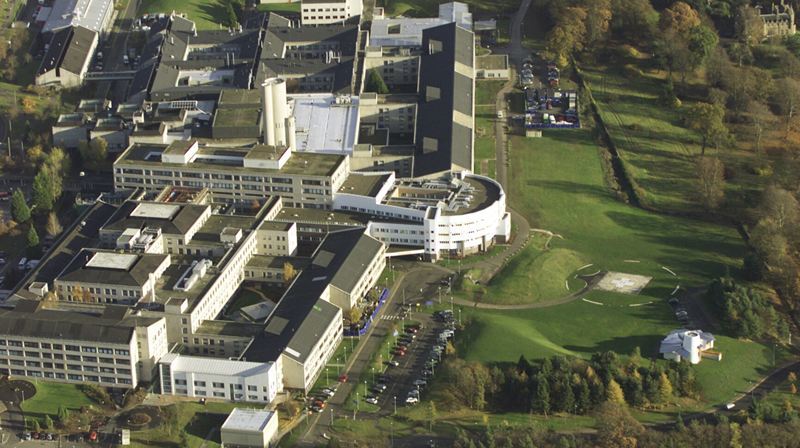Ninewells Hospital bosses are taking advice from MI5 before building a new mail room to cope with the flood of letters and packets coming into and leaving the site.
Health bosses have just approved a proposal to replace the dilapidated portable building that serves as the hub of the Dundee hospital’s mail service. They have earmarked £1.2 million for the development and are about to engage an architect before getting started on the new build next year.
Site manager Brian Main said the building would be on the periphery of the site a safety measure to take account of the increased threat from terrorism and the risk from parcel bombs.
The handful of mail-room staff shift nearly a million letters and packets a year and that’s just the outgoing mail but they would be in the front line of any attack by parcel bombers.
Mr Main said, “Some of the guidance we are following in terms of the design of the mail room is contained in MI5 documents.
“In recent years there has been an increased threat from terrorism and a risk parcel bombs could come through the mail system. We will be designing the building with increased security in line with… security services advice, MI5.”
He said a new mail room was long overdue, with the existing service in a building that is “completely past its sell-by date” and does not meet modern standards.
To Mr Main’s surprise the sheer volume of mail that passes through Ninewells has burgeoned in recent years going against the earlier expectation that computers would take over.
Five years ago the annual amount of outgoing mail, franked by mail room staff, amounted to 711,843 items.
That has risen year on year until last year there were 890,547 items sent out by NHS Tayside from Ninewells.Last for “30 to 40 years”Some 11% of that total was sent out through the mail room on behalf of Dundee University staff based on the site.
“On top of that the guys down there have mail coming in from Royal Mail, between 30 and 40 sacks a day,” said Mr Main, adding that each sack weighs about 10kg.
In addition courier vans arrive throughout the day delivering mail and equipment that has to be despatched to the appropriate ward or department.
Mr Main said the mail room staff could not be easily replaced if one of their number was off sick because the team were like London cab drivers and had “the knowledge” of the hospital, knowing where to send mail that is minimally addressed to reach the intended recipient.
Construction on the new mail room is expected to start in April once architects have come up with a design accommodating the MI5 guidance and should be completed by December.
Persuading health bosses to part with such a significant sum of money to provide the new building was not easy when there are major bids going in to improve patient care and deliver what can be life-saving treatments.
But Mr Main said, “If the guys were not dealing with the mail lots of things would not happen. The hospital would grind to a halt because people would not get appointments or dates to come in for operations or tests.”
He added that the new mail room would include space to cope with an even greater volume of post in future.
Mr Main said, “What we are putting in place is something for the long term that will do us for the next 30 to 40 years.
“Even if the mail continues increasing at the rate it is, the new building is going to cope.”
